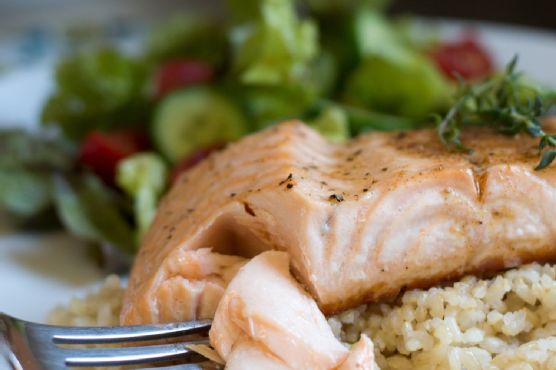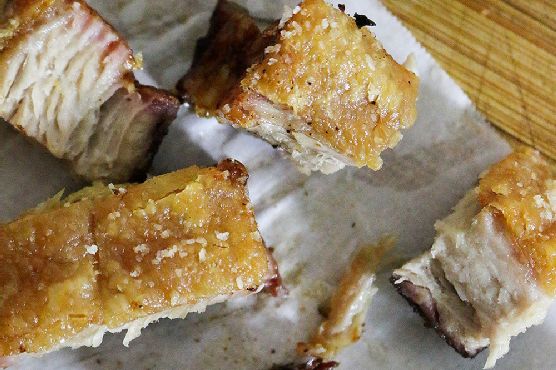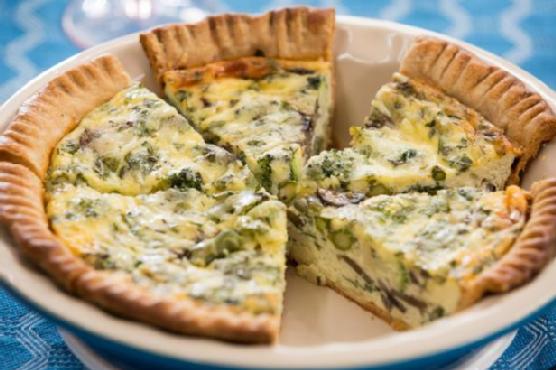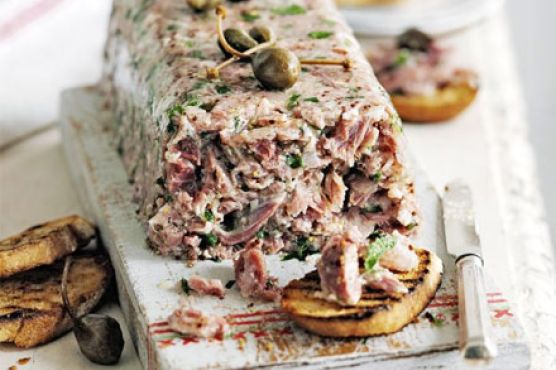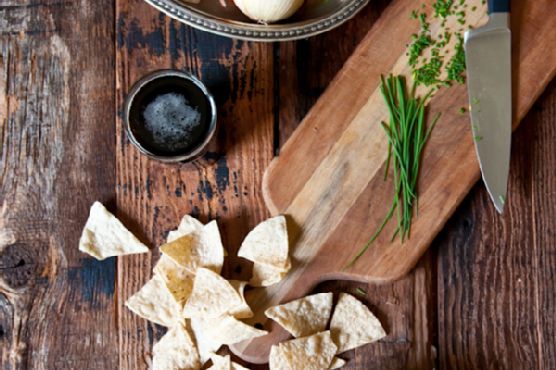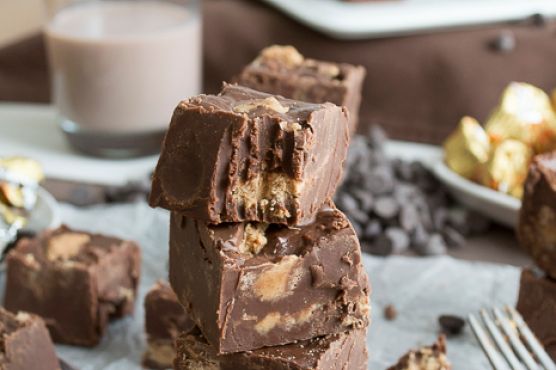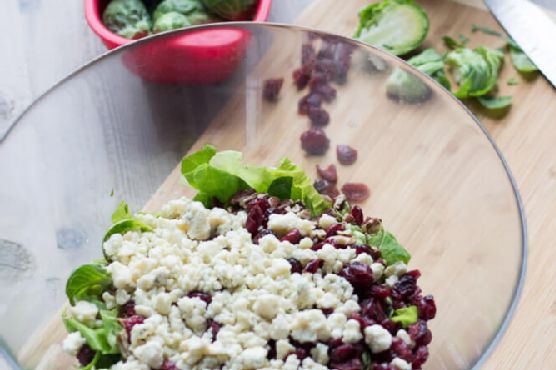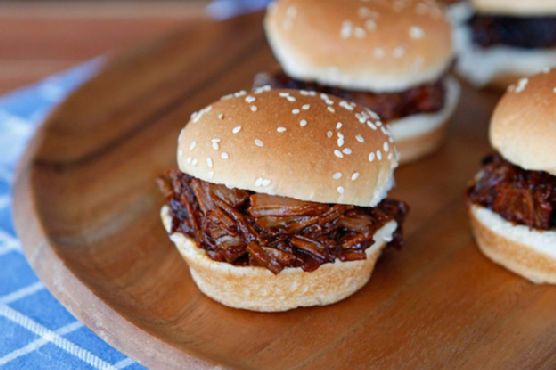Broiled Salmon with Spiced Baharat Butter
Broiled Salmon with Spiced Baharat Butter requires about 45 minutes from start to finish. One serving contains 388 calories, 23g of protein, and 33g of fat. This recipe serves 4 and costs $2.84 per serving. 1135 people have tried and liked this recipe. It is a good option if you're following a gluten free, fodmap friendly, and pescatarian diet. If you have baharat, olive oil, salt, and a few other ingredients on hand, you can make it. It is brought to you by The Kitchn. Many people really liked this main course. With a spoonacular score of 71%, this dish is pretty good. Similar recipes include Baharat-Spiced Sufganiyot with Espresso Fudge, Indian-Spiced Broiled Salmon with Citrus Tart Cherry Chutney, and Broiled Spiced Pork Chops.
Servings: 4
Ingredients:
1/2 tablespoon Baharat
Olive oil
1 pound salmon fillets (typically 2 fillets)
1/2 teaspoon salt
Salt and freshly ground black pepper
4 tablespoons unsalted butter, softened
Equipment:
wax paper
bowl
kitchen twine
broiler
oven
kitchen thermometer
stove
frying pan
Cooking instruction summary:
To make the compound butter, stir together the butter, spice blend, and salt in a small bowl until thoroughly combined. Refrigerate until the salmon is ready.
You can also make the butter ahead of time and store it in the fridge or freezer. If making ahead, transfer the compound butter to a sheet of parchment or wax paper. Roll into a log, about five inches long and one inch in diameter. Twist the ends closed and secure with kitchen twine or rubber bands. Refrigerate for up to one week. Compound butter can also be frozen for up to a month.
To cook the salmon, turn on the broiler and position an oven rack a few inches below. Place a large (12-inch) skillet on the stovetop over medium-high heat, and coat the bottom of the pan generously with olive oil. When the oil begins to shimmer, gently place the salmon in the pan, leaving at least an inch of space between the fillets. The fish should sizzle on contact.
Do not move the fillets once they are in the pan. As the fish cooks, the fillets will turn from translucent to opaque. Allow the salmon to sear until the opaque color has traveled about one third of the way up the fillets and you are just beginning to see a bit of golden brown color around the edges, 2 to 3 minutes.
Position the skillet under the broiler. Broil until the fish is opaque and beginning to brown slightly on top, about three minutes. The fish should still yield slightly to the touch when you remove it from the oven, but should flake easily with a fork. If you like, you can use an instant read thermometer to check the fish for doneness. The USDA recommends a minimum internal temperature of 145F, which should be measured at the thickest part of the fillet.
Cut the fillets in half and serve, topping each piece with a small pat of the compound butter.
Recipe Notes
Try other spice blends in the butter, such as curry powder or garam masala for an Indian-spiced twist. Or go a little spicier with berbere or chili powder, Moroccan with Ras el Hanout, or Mediterranean with za'atar.
As with any fish, buy the best salmon you can find and afford. For more information about best practices for buying salmon, take a look here: Salmon Fact Sheet from the Monterey Bay Aquarium Seafood Watch
Step by step:
1. To make the compound butter, stir together the butter, spice blend, and salt in a small bowl until thoroughly combined. Refrigerate until the salmon is ready.You can also make the butter ahead of time and store it in the fridge or freezer. If making ahead, transfer the compound butter to a sheet of parchment or wax paper.
2. Roll into a log, about five inches long and one inch in diameter. Twist the ends closed and secure with kitchen twine or rubber bands. Refrigerate for up to one week. Compound butter can also be frozen for up to a month.To cook the salmon, turn on the broiler and position an oven rack a few inches below.
3. Place a large (12-inch) skillet on the stovetop over medium-high heat, and coat the bottom of the pan generously with olive oil. When the oil begins to shimmer, gently place the salmon in the pan, leaving at least an inch of space between the fillets. The fish should sizzle on contact.Do not move the fillets once they are in the pan. As the fish cooks, the fillets will turn from translucent to opaque. Allow the salmon to sear until the opaque color has traveled about one third of the way up the fillets and you are just beginning to see a bit of golden brown color around the edges, 2 to 3 minutes.Position the skillet under the broiler. Broil until the fish is opaque and beginning to brown slightly on top, about three minutes. The fish should still yield slightly to the touch when you remove it from the oven, but should flake easily with a fork. If you like, you can use an instant read thermometer to check the fish for doneness. The USDA recommends a minimum internal temperature of 145F, which should be measured at the thickest part of the fillet.
4. Cut the fillets in half and serve, topping each piece with a small pat of the compound butter.Recipe Notes
5. Try other spice blends in the butter, such as curry powder or garam masala for an Indian-spiced twist. Or go a little spicier with berbere or chili powder, Moroccan with Ras el Hanout, or Mediterranean with za'atar.As with any fish, buy the best salmon you can find and afford. For more information about best practices for buying salmon, take a look here: Salmon Fact Sheet from the Monterey Bay Aquarium Seafood Watch
Nutrition Information:
covered percent of daily need
